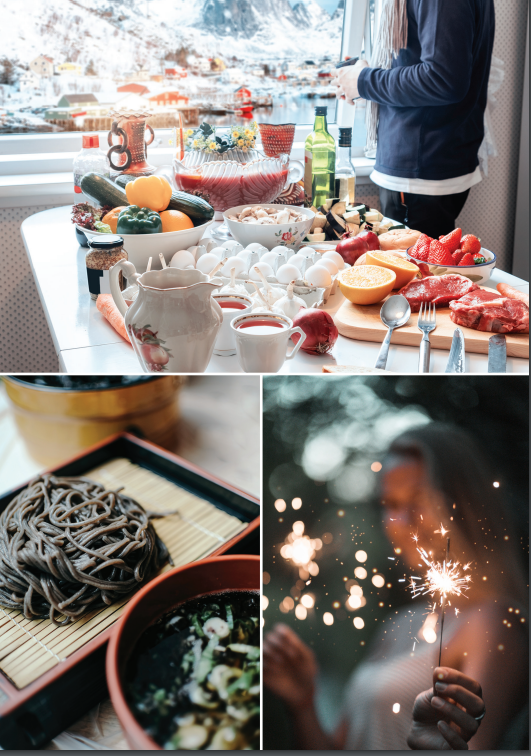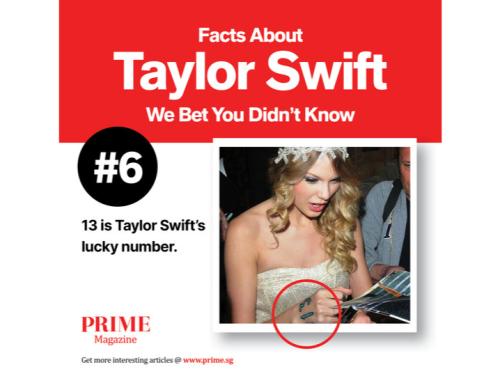Bring in the New Year
A Survey of New Year Traditions and Cuisines Around the World

As yet another year (in this case, decade too – there is no Year 0 when the current era began more than 2,000 years ago; hence, all decades, centuries and millennia begin with year 1) draws to a close, many vacationers might have had plans for a special holiday to welcome the New Year in another country, which would have made for an extra special experience.
However, in 2020, most of such plans to travel to faraway exotic lands will likely not come to fruition. But this should not dampen one’s adventurous spirits. Instead, this should be viewed as an opportunity to learn more about the customs and cultures of the lands you hope to visit someday. So let us dive deep and learn more about some of the more interesting, and often unusual ways in which communities around the globe welcome the New Year.
HOW NEW YEAR CELEBRATIONS STARTED
According to historians, the celebration of a New Year has been practiced by civilizations for at least 4,000 years. Communities would follow the sun and sometimes, the moon to determine the correct day of a New Year. The earliest recorded festivities date back to ancient Babylon, when the first new moon following the day in late March with an equal amount of sunlight and darkness was the sign that a New Year was beginning.
As time progressed, more and more accurate calendars were developed. However, these were usually associated with agricultural or astronomical events. While most calendars follow the solar system, there are also many which are based on the moon (lunar calendar). Some New Year celebrations take place in March or April, while others occur in October. For example, the Chinese New Year, commonly thought to follow the lunar cycle, actually follows a lunisolar calendar, in which months are lunar but years are solar (i.e. brought into line with the course of the sun). The Islamic New Year is on the first day of Muharram, the first month in the lunar Islamic calendar, which differs from the Gregorian calendar. Also, different Islamic denominations – Shi’a and Sunni – and cultures mark Muharram through different ways, including fasting, pilgrimages to shrines and remembrances of important historical events.
For countries which do follow the Gregorian calendar, New Year’s Day on 1 January is among the most celebrated public holidays.
NEW YEAR CUSTOMS IN ASIA
Let us begin in Asia and look at how some cultures closest to us celebrate the New Year.
In the Philippines, round shapes, representing coins and symbolizing prosperity, are used to decorate dining tables, together with all kinds of round fruits on New Year’s Eve. Filipinos also consume grapes; keep coins jangling in pockets to keep the money flowing and even don clothes with polka dots to keep up the round theme.
Meanwhile, in nearby Japan, it is customary to dine on a bowl of buckwheat noodles called toshikoshi soba (“yearcrossing noodles”) before midnight of the New Year. It is a tradition that dates back to the 17th century. The long noodles, which are easy to cut through, not only symbolize longevity and prosperity, but also the breaking of bad luck from the previous year.
There is another Japanese custom called mochitsuki, where friends and family spend the day before the New Year pounding mochi rice cakes. Other traditional foods eaten include kuromame (sweet black beans), kazunoko (herring roe), kobumaki (rolled kelp), rice cakes and shrimp. Another custom is joyanokane, where Buddhist temples all over Japan ring their bells 108 times to dispel the 108 evil passions all human beings have. Traditionally, 107 bells are rung on the last day of the year and the 108th in the New Year.
TURKEY AND EASTERN EUROPE
Turkey, situated across Asia and Europe, is where one can find the fusion of Middle Eastern and European customs. One charming tradition calls for Turkish women to wear red underwear during the New Year season. Markets are flooded with red lingerie and they are presented as gifts for good luck and the promise of a fruitful New Year. Similarly, in Latin American countries like Mexico, Bolivia and Brazil, the colour of your undies is said to determine what kind of year you will have – red will bring love, while yellow will bring wealth. If you seek peace and harmony, wear white. Finally, green signifies well-being and harmonizing with nature.
Over in Eastern Europe, Romanian farmers will attempt to hear their animals speak. If they are successful, it means that they can expect a prosperous year ahead. New Year’s Eve rituals in rural areas also include mask dances and ceremonies about death and rebirth. Dancers dress up in furs and wooden masks depicting goats, horses or bears, then dance from house to house to ward off evil spirits. The dance of the bear is the most popular. If he visits your house, you can expect good luck, prosperity and health.
Food plays an important role in many New Year traditions, including those in Eastern Europe. Estonians eat 7, 9 or 12 meals on New Year’s Eve, believing that with each meal eaten, they will gain the strength of that many men. Part of each meal, however, is left unfinished for the spirits of ancestors who visit the house on New Year’s Eve. On the other hand, Hungarians avoid eating poultry and fish as the former represents luck flying away, while the latter suggests luck swimming away At the stroke of midnight, Poles (and Scandinavians) dine on pickled herring, which is plentiful and silver in colour, believing that it will bring a year of prosperity and bounty. Herring is often eaten with a midnight smorgasbord of other smoked and pickled fish, sometimes in a cream sauce, while others may have it with onions, pâté and meatballs.
SCANDINAVIA, CENTRAL AND WESTERN EUROPE
A Danish tradition sees people smashing plates and crockery against the doors of their neighbours to bring them good luck for the year ahead. All year round, unused plates are saved and on 31 December, they are all hurled at the front doors of friends and family. It is believed that the bigger the pile of broken china, the more friends and good luck you will have in the coming year. Another custom in Denmark is jumping off chairs at midnight, which symbolizes the leap into the New Year when the clock strikes 12. Danes and Norwegians also celebrate the New Year with a dessert called kransekage (wreath cake). It is a tall, cone-shaped cake with many concentric rings layered on top of one another. The cake is made with marzipan and often decorated with ornaments of flags and firecrackers, and a bottle of wine or mineral water in the centre.
In Greece, an onion is hung on the front door on New Year’s Day alongside a pomegranate (which is hung on Christmas) to symbolize birth and re-growth in the New Year. Later in the evening, a meal of roast lamb or pork is eaten, with an extra place set at the dining table for Aghios Vassilis (Santa Claus).
Another Greek tradition is the “New Year Baby” who is dressed up in a sash, diaper and a top hat placed in a basket. Symbolizing the year to come, the “New Year Baby” is said to denote Dionysius, the Greek God of Wine. According to Greek folklore, he is said to have been reborn as the spirit of fertility on New Year’s Day. A similar Greek tradition for fertility and prosperity calls for the smashing of a pomegranate on the floor near the doorstep at midnight. The more pieces the fruit breaks into, the more good fortune will come your way.
People in the Netherlands ring in the New Year – Oud en Nieuw (“Old and New”) – with sweets. Oliebollen, which are fried donut-like pastries filled with apples, currants and raisins, and sprinkled with powdered sugar, are served along with apple beignets, apple turnovers and champagne.
The pig plays an important role in many European celebrations as they symbolise “root forward”, which represents forward motion or advancement. Pork, ham and roasted pig are popular New Year food choices for a number of cultures around the globe. In Austria, roasted suckling pig is served for good luck on New Year’s Eve (AKA Sylvesterabend or St Sylvester’s Day). Dinner tables are also decked out with little marzipan pigs to represent progress and prosperity not only in Austria, but in Cuba, Hungary and Portugal as well, where they also serve pigs on New Year’s Eve. For drinks, Austrians will sip a red wine punch, mixed with cinnamon, sugar and other spices, and offer a toast to St Sylvester.


In nearby Germany, marzipanschwein or good luck pigs (glücksschwein) are also common. Germans would enjoy a traditional meal of silvesterkarpfen (“New Year’s Carp”) on New Year’s Eve. It is also considered lucky to keep a scale from the carp in your wallet throughout the year to bring wealth and luck.
Once the clock strikes midnight and fireworks have been set off on New Year’s Day, Germans usually enjoy a traditional treat of jam-filled and sometimes, liquor-filled, donuts called “pfannkuchens” in Berlin and known as “Berliners” everywhere else in Germany. New Year’s Eve is also celebrated with a traditional drink called feuerzangenbowle. This is made by mixing warm mulled wine with cinnamon, cloves, orange peel and a cone-shaped piece of sugar, soaked in rum, which is then set alight above the wine and melted into the wine.
Across the border, in Switzerland, Old Sylvester’s Day is celebrated on 13 January according to the Julian calendar. On that day, locals go out dressed in costumes and sometimes, very tall hats representing a variety of good and evil spirits. There is also the belief that good luck comes from letting a drop of cream land on the floor on New Year’s Day to begin a year of overflowing abundance. Many annual customs also pay homage to the work of Swiss farmers. If you have always wondered why they have a cake made to look like a log, it is because its decorations are a reference to the fieldwork done in spring.
Meanwhile, in the British Isles, Scots celebrate the New Year, which they call Hogmanay, with the tradition of the First Footing – quaaltagh or qualtagh – which dictates that the first person to cross the threshold after midnight on New Year’s Eve should come bearing gifts, such as coal, bread, salt and a “wee dram” of whiskey. A tall, dark-haired male is thought to bring the best luck for the house. The tradition probably dates back to the Viking days when big, blond strangers (commonly armed with axes and swords) at the door meant trouble.
In Ireland, single women place mistletoe (associated with fertility in European mythology) under their pillows, then burn the branches in a fire the next day in the hope of falling in love during the year. Another Irish tradition calls for hitting bread against the walls and doors to banish bad luck and evil spirits.
SOUTHERN EUROPE
The Italians celebrate New Year’s Eve with La Festa di San Silvestro, often commencing with a traditional good luck sausage and a lentil stew cotechino con lenticchie (the lentils represent money and good fortune). In certain households, dishes like zampone, a stuffed pig’s trotter, and chiacchiere, balls that are rolled in honey and powdered sugar, are served with prosecco to end the meal.
A typical New Year custom in Naples, southern Italy is based upon the idea of “out with the old”. On New Year’s Eve, old and unwanted furniture is thrown out of balconies to make way for a fresh start. In actual practice, most simply throw small and soft objects so as to not knock out pedestrians. Oddly, this custom is also practised in Johannesburg, South Africa.
Over in Spain, eating 12 grapes at midnight (one grape for every toll of the clock bell and to symbolize each month of the coming year) is a tradition that originated in the early 20th century and is still being practiced today. Apparently, vine growers in Alicante came up with this idea in order to sell more grapes after an exceptional harvest.
THE AMERICAS
If you happen to be in the US and expect champagne to be the traditional way of bringing in the New Year, you may be surprised by a delicious food tradition which is popular in South Carolina and the Deep South. Hoppin’ John is a dish of pork-flavoured field peas or black-eyed peas (symbolizing coins) and rice, frequently served with collards or other cooked greens (as they are the colour of money) and cornbread (the colour of gold). This dish is said to bring good luck in the New Year. Served since the 1840s, different folktales offer different takes on the history and the origins of this meal. However, the current popularized version has its roots in African and West Indian traditions, and was most likely brought over by slaves to North America.
Certain European customs have made their way across the seas to the Americas. Mexico, once colonized by Spain, also has the tradition of eating a grape to represent a wish, and baking the sweet breads Rosca de Reyes, with coins or good luck charms embedded within. Salted codfish, warm tequila punch, ponche and fried fritters are also traditional New Year fare.
Tamales, corn dough stuffed with meat, cheese and other delicious additions, wrapped in a banana leaf or a corn husk is an especially popular food. In many families, women gather together in a production line to make hundreds of these little packets to present to friends, family and neighbours. Often served with menudo, a tripe and hominy soup, it is supposedly very effective for that New Year morning hangover.
Lentils are another symbolic food that herald prosperity and good fortune, and are often eaten at midnight. Sometimes, they are placed into pockets and purses to symbolize a year of abundance. Venezuelans would wrap 12 lentils in a money bill to improve financial well-being. As the beans are round and thought to be coin-like, and they expand upon cooking, they traditionally represent an increase in wealth and prosperity. Similarly, Argentines also eat beans on New Year’s Day as it is believed that dining on beans will help them keep their job or advance their career in the New Year.

Meanwhile, for those with specific goals in mind, burning candles is said to help. A different coloured candle is burned for different desires: red for love, blue for peace, green for health and orange for creativity. If you are in Bolivia, try this to make your unrequited love notice you: stand up and sit down 12 times. Then, tie a red ribbon around a picture of the person you love and place it under your pillow.
Over in Brazil, there is the Iemanjá Festival on New Year’s Eve, where followers of the Umbanda religion wear white and go to the beach to offer flowers and gifts to Iemanjá, the Goddess of Water. Many Brazilians also believe in the Lucky 7 rituals: eat 7 grapes for abundance, chew 7 pomegranate seeds for prosperity or jump over 7 waves, making a wish on each wave.
In other parts of South America, there is a rather morbid custom of celebrating the New Year with deceased relatives in the cemetery in Talca, Chile. While in Colombia, grain and good harvest continue to be important, where locals place 12 shafts of wheat on their dinner table to ensure an abundance of food in the year to come. In Ecuador, scarecrow-like dolls of politicians, pop stars or other notable figures are set alight. Burning the año viejo (old year) is meant to destroy all the bad things from the last year and cleanse for the new. The scarecrows are made from old clothes stuffed with newspaper or sawdust, and wears a mask on the face. This tradition possibly originated in Guayaquil in 1895 when a yellow fever epidemic hit the town, and coffins packed with clothes of the deceased were burnt for purification.
While many places around the world have a tradition of throwing old things out the window to get rid of bad luck, most South Americans merely dump a pan or glass of water. Uruguayans have the Guerra de Sidra (The Cider War Festival) in Montevideo where those who happen to be shopping at the Port Market can be splashed in cider or beer, and indulge in water fights! Another seemingly violent custom can be found in the year end Peruvian festival – Takanakuy (when the blood is boiling), which sounds strangely combative instead of celebratory. While competitors do fight with bare knuckles, do not worry if you encounter this as it is apparently all friendly. The ritual simply represents the way to a fresh start for the year.
FORTUNE TELLING
Every New Year usually includes some form of fortune telling as ritual. One way to forecast one’s financial situation for the upcoming year in Peru and Colombia calls for one fully-peeled, one half-peeled and one unpeeled potato to be thrown under the bed. You are then required to reach for the first potato you encounter. If you nabbed the unpeeled potato, good fortune ensues. The half-peeled potato brings a normal year, while the fully-peeled potato heralds financial trouble.
Single maidens in Belarus play games on New Year’s Eve to predict who will marry. One game involves a pile of corn being placed before each woman, then a rooster is set free to feast on the corn. Whichever pile the rooster eats first will determine the girl to be married first. In another game, a married woman hides a loaf of bread and a ring in her house, while her unmarried friends hunt for them. She who finds the bread is said to marry a rich husband, while the one who finds the ring will marry a handsome man.
The Germans have a rather odd custom of melting small pieces of lead in a spoon over a candle, then pouring the liquid into cold water. The bizarre shapes from the Bleigießen (lead pouring) are supposed to reveal what the year ahead will bring. If the lead forms a ball, luck will roll one’s way. A crown points to wealth, while a star brings happiness. On the other hand, a cross signifies doom.
With so many fascinating customs around the world, why do the same for every New Year? Be inspired to initiate a new and unique experience with friends and family that will bring in the new and get rid of the old; so begin a novel New Year celebration for the next decade this year!
Have a Merry Christmas and a Happy New Year!
Disclaimer: Every family in every culture celebrates or commemorates in slightly different ways, so all that is described in the article may or may not be the exact practice or custom you are familiar with. There is nothing like actually visiting the country and celebrating with a native of that land to truly experience his/her unique New Year customs.
Ms Jean Tsai
Jean Tsai is a communications and training professional with more than 30 years of experience in the banking, technology, healthcare, luxury goods as well as the arts and culture industries. She holds a Master of Public Health from UCLA, USA. Whilst employed full time in the corporate world she also found time to be a docent with NLB , Nparks ,seven National Heritage Board institutions, heritage annual events and the Istana. In recent years, she divides her time between being a free- lance writer, curator and researcher while continuing her more than 20 year service as a museum docent.










